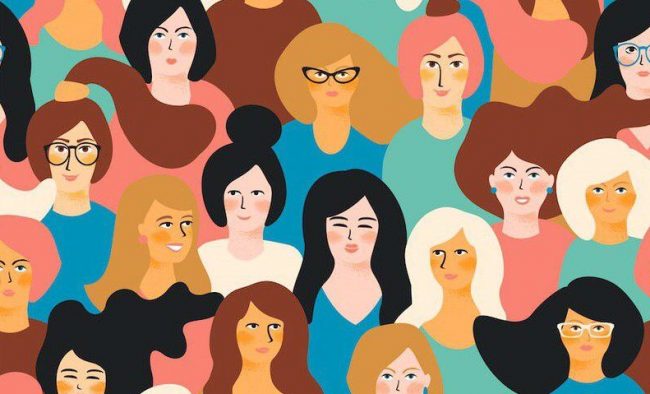The Subjects of the “Most Effective Movement” of Civil Society: Women

We talked to Associate Professor Doctor Itır Erhat and the author of the “Civil Women” book Professor Doctor Ömer Çaha from the Academy and to two significant women from the civil area, Tohum Autism Foundation’s General Manager Betül Selcen Özer and President of the Association for Supporting Women Candidates (KA.DER) Nuray Karaoğlu about being a woman in civil society and the impact of women in civil society.
Turkey has surpassed the 8th of March last week with data and determinations that demonstrated that gender equality could not be achieved in the civil sector. Thus, the World Economic Forum (WEF) 2020 Gender Equality Report ranks Turkey as the 130th out of 153 countries.
Although gender equality has not been achieved, it can be said that civil society differs from other sectors by opening up space for women and different gender identities. Although less involved in the member and decision mechanisms, women can be considered as the subjects of “Turkey’s most important and effective civil movement”.
Lack of Data Which Is Sensitive To Gender Issues
One of the important issues in the evaluation of the data from a gender equality perspective is that gender sensitive data cannot be accessed in Turkey, or it can only be accessed in limited numbers… Besides the general problem in accessing data in Turkey, it is seen that the official institutions are quite behind in creating gender sensitive data. As KA-DER President Nuray Karaoğlu points out, keeping data according to age-gender and demographic criteria is critical in determining the needs and demands especially for women…
Reflection of Gender Inequality to Numbers in Civil Society
It can be confirmed from official data that the number of women who are members of non-governmental organizations is low as in many other sectors.
According to the latest data of the General Directorate of Civil Society Relations:
Active Association Number in Turkey: 119.564
Number of Association Member Citizens in Turkey: 7.276.873
Number of Association Member Women in Turkey: 1.333.101
Rate of Number of Association Member Males To Population: 7.36%
Rate of Number of Association Member Women To Population: 1.65%
Despite the lack of gender-sensitive data, it can be said that the number of women working in civil society is relatively high compared to other sectors. At this point, we can consider the guidance of the areas in which NGOs operate when determining gender distribution.
Betül Selcen Özer states that the Foundation is one of the NGOs with the highest number of women working in the civil field (87%), and that even the majority of the volunteers are women, and we think that we will encounter a similar picture in NGOs working in the fields of education and health.
According to the data of the General Directorate of Civil Society Relations:
Genders of the Members Elected to Association Bodies (For 2018)
Number of Woman Members: 1.851.963 (18.85%)
Number of Male Members: 7.974.192 (81.15%)
As in other areas in Turkey, the rate of senior decision-making women among NGOs is low. At this point, Betül Selcen Özer says that she does not think there is a difference between male and female managers in civil society and that the issues, problems and solutions related to the civil field are already very similar and that there is no advantage in being a man or woman at this point. She also states that it does not create any disadvantages.
KA.DER President Nuray Karaoğlu thinks that the power and influence of women have increased in civil society with the global women’s movement. Karaoğlu, who says that women NGOs advocate women’s rights by creating a strong pressure, thinks that being a manager in NGOs as in every field, imposes more responsibility on women. She says: “It is not easy for women to work in NGOs, there is a need for more solidarity and cooperation.”
Glass Ceiling Victims
So, how effective is the glass ceiling on the limited number of female managers among civil society?
Itır Erhart reminds that the glass ceiling still exists in the civilian area, that the top executives, the board of directors and members of the board of trustees are predominantly men, and that, like other sectors, it is not possible to say that gender equality is achieved in the civilian area as well.
President of KA.DER Nuray Karaoğlu, who as a woman manager herself evaluates the victims of the glass ceiling as whole with all other sectors says: “Barriers in all areas for women are not just an issue for women to overcome, but a problem of democracy and this problem must be solved together.” by emphasizing the importance of gender equality in determining the democratic character of the political system.
Civil Society Which Opens Spaces
Associate Professor Itır Erhart answers the question of whether being a woman has a negative or positive effect on civil society as: “Civil society is an area where gender roles are questioned more than other sectors and therefore different females and masculinities can exist. It also opens space for femininity outside of the stressed femininity.” General Manager of Tohum Autism Foundation Betül Selcen Özer thinks that civil society is always ahead of other sectors in terms of gender equality. Stating that she has worked in organizations that integrate gender equality in all their works, Özer says: “Being a woman in the civil field has always been a positive effect for me.”
The Power and Effect of Women’s Movement on Civil Field
Another dimension of being a woman in the civilian field is the women’s movement that has come to this day through women’s struggles to ensure gender equality…
The author of the book “Civil Women: Civil Society and Women in Turkey” Professor Doctor Ömer Çaha evaluated being a woman in the civil field with its women’s movement dimension. Çaha, who has been interested on gender equality since the Ottoman times until today, argues that the most important and effective civil society movement in the last forty years of Turkey has occurred at the women’s front.
According to Çaha: “Women from different perspectives, from various political and world views put the multi-faceted problems faced by the woman on the table, and developed a perspective and sensitivity. Today, on the background of the developments in favor of women or of the sensitivity towards women’s problems, lies this sensitivity that the women’s movement has awakened towards women.”
Referring to the political aspect of the women’s movement, Professor Doctor Ömer Çaha states that they made women’s organizations being revised on the basis of equality and they opened the way to take women’s perspectives into account in many areas including academia and the media, and publicized issues such as domestic violence and sexual harassment. He emphasizes that by putting pressure on decision makers, they’ve provided space for women and that women has made a significant contribution to the political life of Turkey.
On the other hand, KA-DER President Nuray Karaoğlu, who emphasizes that women are far behind in Turkey among political and all other decision-making mechanisms, says that the pressure on women in Turkey is increasing, that we are passing through times where women’s rights and freedoms are retrogressing and that there is a lot more distance to be covered.
The Wave of Change and Transformation Created by the Women’s Movement
Can it be said that the ongoing debates especially on the Istanbul Convention have caused a divergence within the women’s movement in civil society?
According to Professor Doctor Ömer Çaha, women groups on different aspects are the ones who enable arrangements such as the Istanbul Convention and the law numbered 6284 and who make them remain in effect today. Leaving minor and marginal exceptions aside, he says that there are no significant differences between feminist women groups or Kemalist, Kurdish or conservative women groups.
Again, Çaha says that the silent revolution initiated by women’s movement in Turkey which resulted in the change and transformation in the social values took women from all segments under its influence. More importantly, although there had been some reactions, he argues that the basis of all this has been the main wave of change and transformation.

Bizi Takip Edin